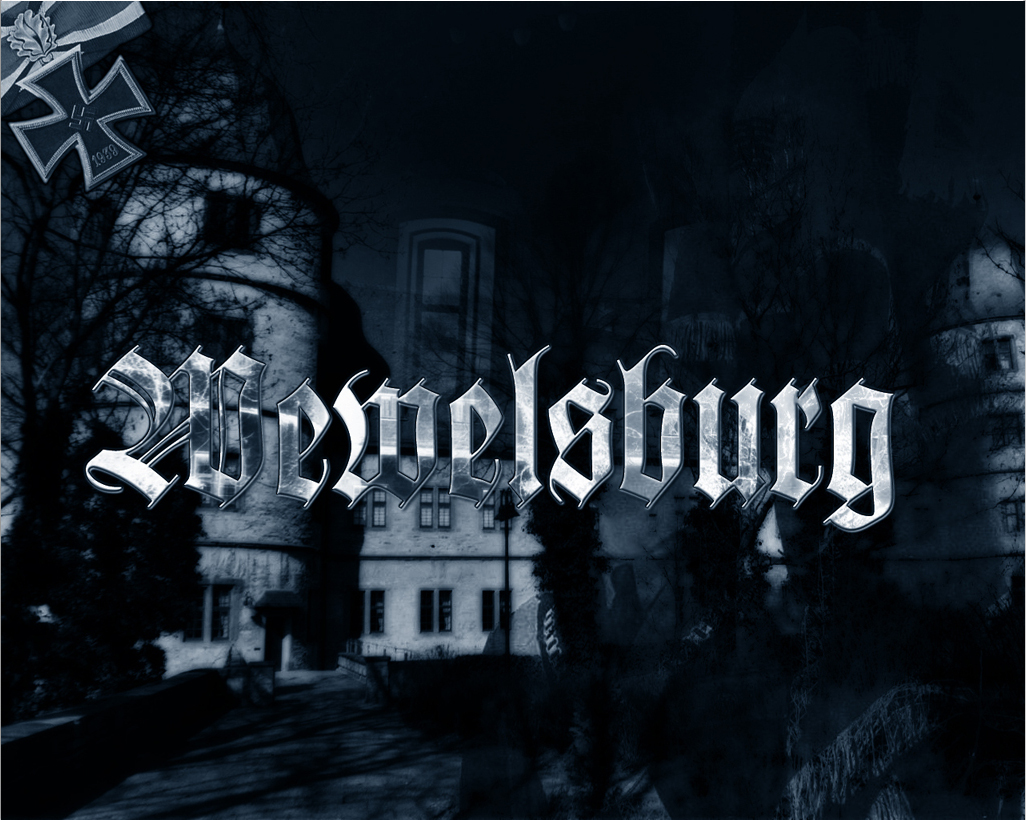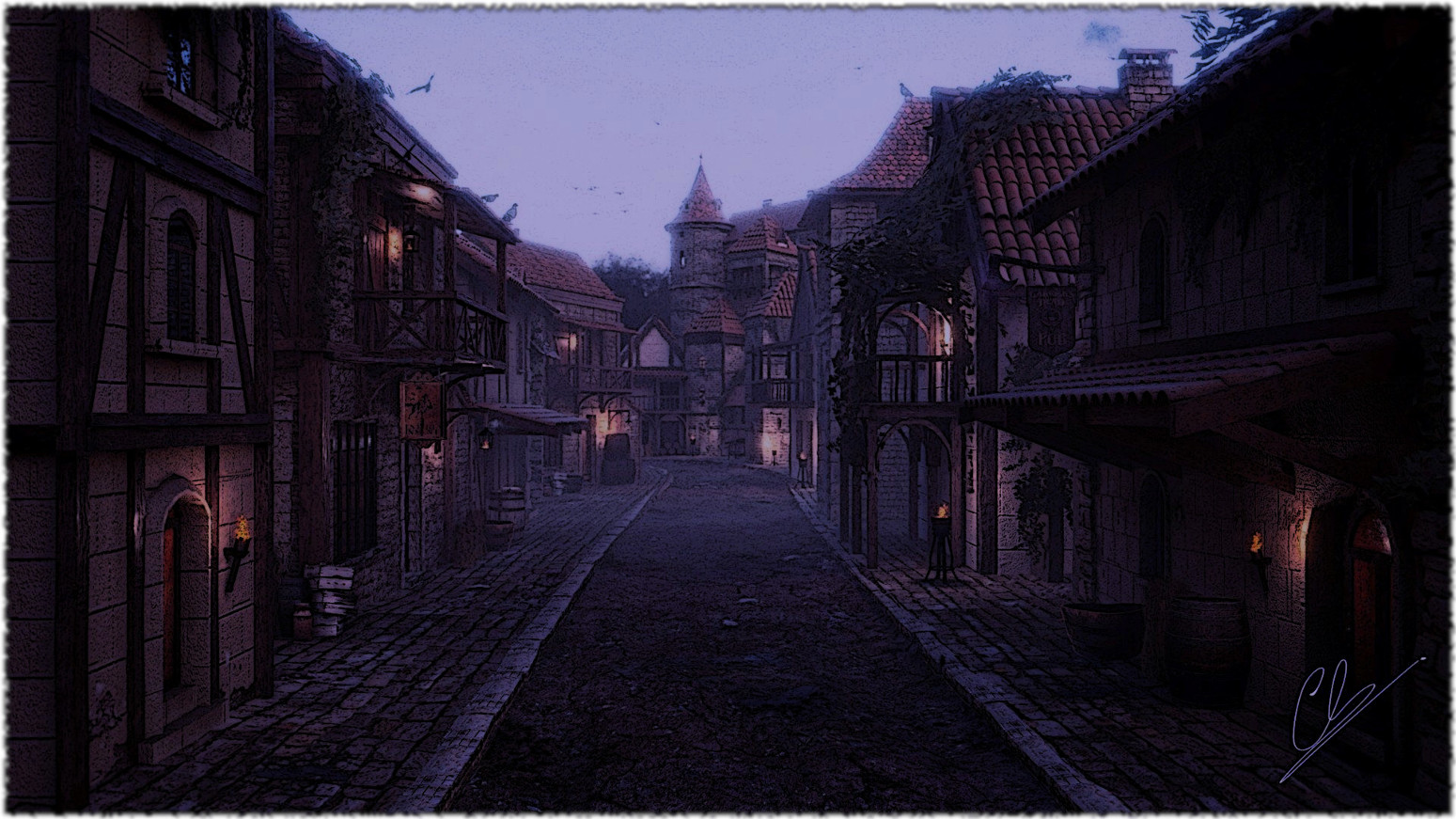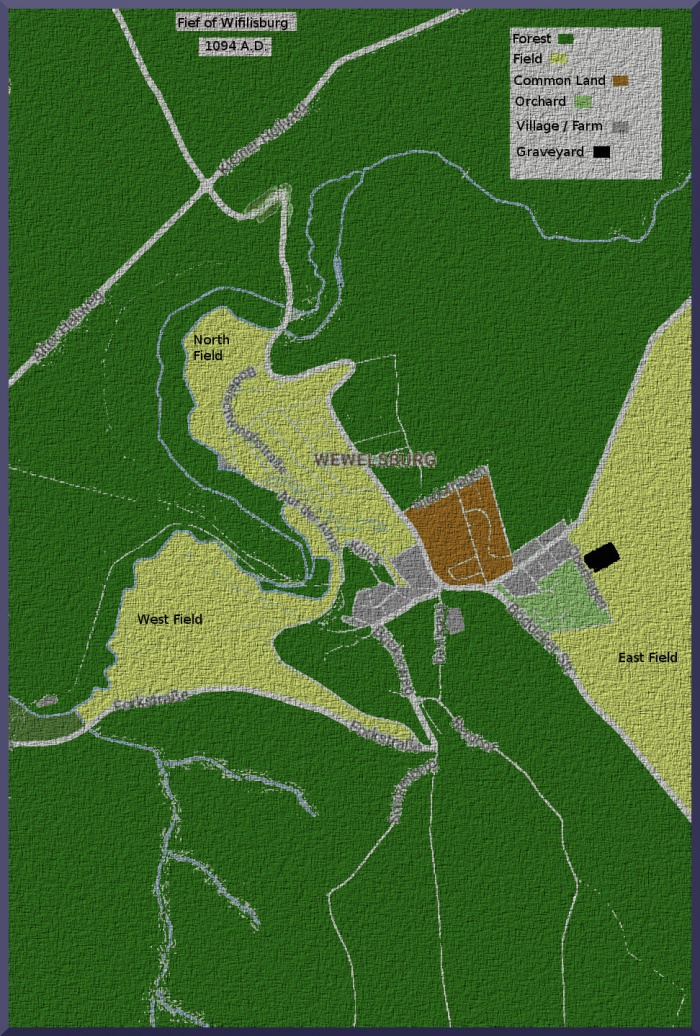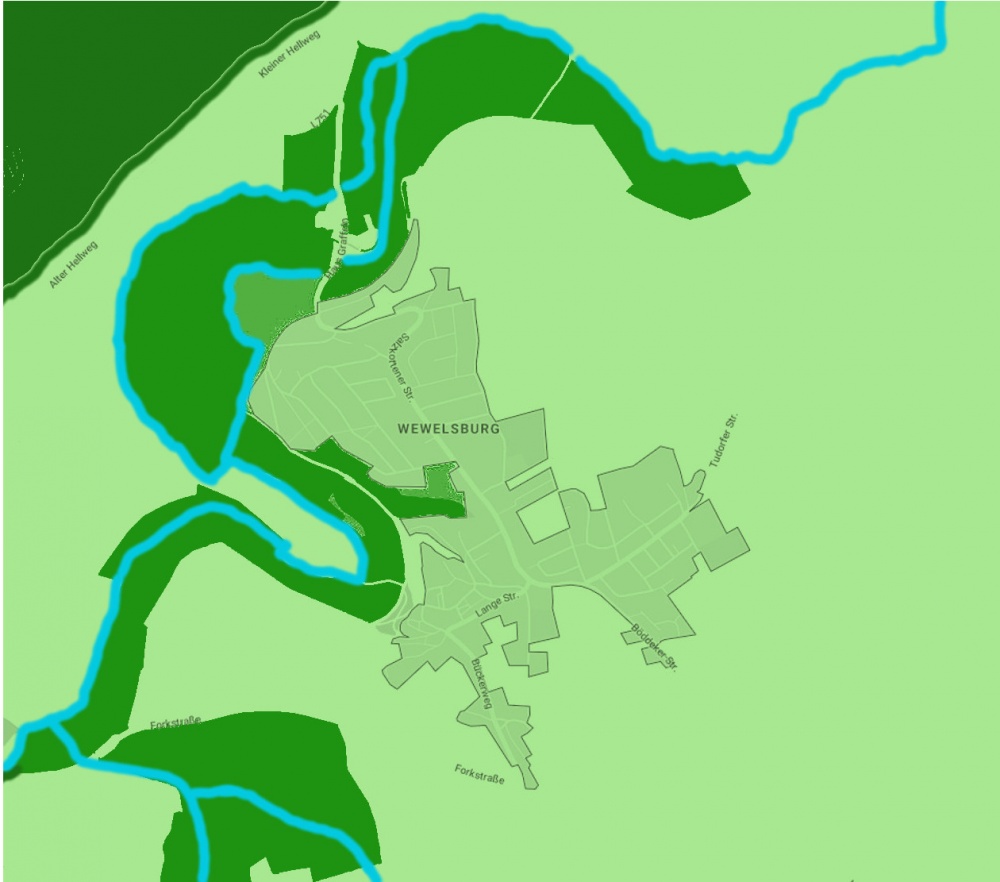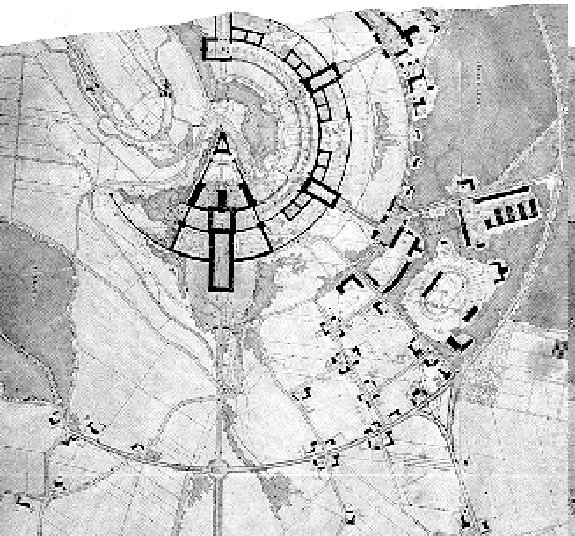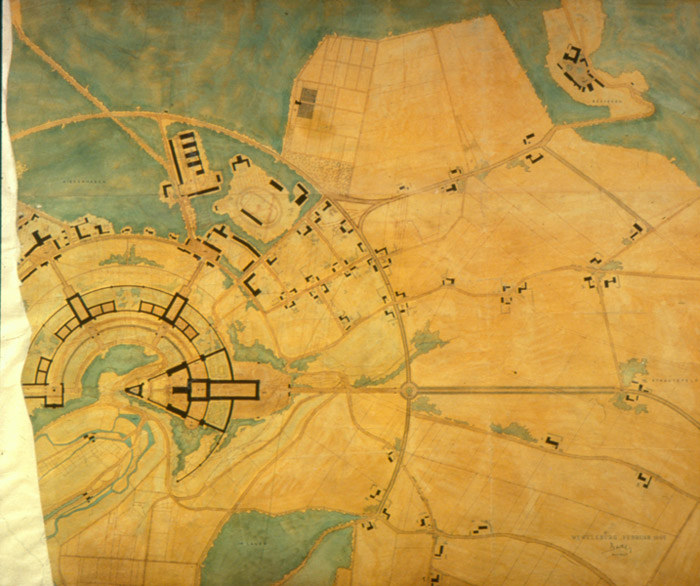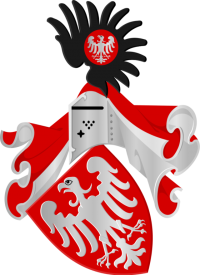Wifilisburg
- The Holy Roman Empire during the High Middle Ages + Paderborn + Crusade of Ashes and Blood + Battle of the Teutoburg Forest + Germany
| Time+Place+Event | 3 Keys to Ancestral Memory | Time+Place+Event |
| ANCESTRAL+MEMORY | ANCESTRAL+MEMORY | |
| To any one of like mind are there windows between every event known to any one of them. | To any one of kindred spirit are there paths between every place known to any one of them. | To any one of the same blood are there doors between every time known to any one of them. |
| Like minds share a window on the same events. | Kindred spirits find a path to the same places. | Blood is the key to eternity. |
Dedication & Acknowledgement: I would like to dedicate this page in thanks to: Sonnenradbanner of Deviant Art for the picture above and huldap also of Deviant Art for her poetry. All praise to you. -- "The Magister 20:58, 18 April 2019 (MDT)"
Prologue: - Teutoburg Forest -- 762 Ab urbe condita (9 C.E.)
Theotman held Odila close to him where they lay wrapped in a rug of furs
Drei Schlüssel zum Ahnengedächtnis
Zeit, Ort und Ereignis. (Time, Place & Event.)
---
Für jedermann gibt es Fenster zwischen jedem Ereignis, das einem von ihnen bekannt ist. (To any one of like mind are there windows between every event known to any one of them.)
Für jeden verwandten Geist gibt es Wege zwischen jedem Ort, der einem von ihnen bekannt ist. (To any one of kindred spirit are there paths between every place known to any one of them.)
Für ein und dasselbe Blut gibt es Türen, zwischen denen jedes Mal bekannt ist. (To any one of the same blood are there doors between every time known to any one of them.)
---
Gleiche Köpfe teilen ein Fenster zu den gleichen Ereignissen. (Like minds share a window on the same events.)
Verwandte Geister finden einen Weg zu denselben Orten. (Kindred spirits find a path to the same places.)
Blut ist der Schlüssel zur Ewigkeit. (Blood is the key to eternity.)
Appearance
Climate
Wifilisburg has a temperate seasonal climate dominated by humid westerly winds. Wifilisburg gets an average of 31 inches of precipitation per year; there is no consistent dry season. Winters are cool and summers tend to be warm: temperatures can exceed 86 °F.
Economy
Pilgrimage
Geography
Locations within the Village
- -- Village Well
- -- Village Common
- -- Smithy
- -- Mill
- -- The Fields
- -- Northern Fields (Fallow)
- -- Eastern Fields
- -- Western Fields
History
Timeline
- [1st Century]
- [4 C.E.] -- A small Roman hill-fort (Kneblinghausen) was established by the general (and later emperor) Tiberius as he entered Germania and subjugated a trio of Germanic tribes south of Teutoburg Forest.
- [9 C.E.] -- Barbarian forces take the hill-fort in preparation for the ambush of three Roman legions within Teutoburg Forest. {Battle of the Teutoburg Forest} <X>
- [2nd Century]
- [235 C.E.] -- Battle at the Harzhorn
- [3rd Century] --
- [4th Century] --
- [5th Century] --
- [451 C.E.] -- Attila leads the Hun invasion of Europe. In May of this year, the town is ravaged by the fores of Attila. <X>
- [6th Century] --
- [567 C.E.] -- In December of this year, Charibert I died. His kingdom was divided among his brothers Guntram, Chilperic I and Sigebert I, the latter of whose domains become known as Austrasia, the eastern land, with its capital at Metz.
- [7th Century] --
- [8th Century] --
- [9th Century] -- Predecessor buildings existed: Wifilisburg was used during the 9th and 10th centuries against the Hungarians. <X>
- [10th Century] --
- [11th Century] -- <X>
- [12th Century] -- Another fortress was built by Earl Friedrich von Arnsberg. After his death, the building was demolished in 1123/24 by peasants whom he had oppressed.
- [13th Century] --
- [14th Century] -- In 1301, the Earl von Waldeck sold the Wewelsburg to the Prince-Bishop of Paderborn. A document about this acquisition proves that two fortress-like buildings stood on the hill: the Bürensches Haus and the Waldecksches Haus. From 1301 to 1589, the Prince-Bishops of Paderborn assigned the estate to miscellaneous liege lords.<X>
- [15th Century] --
- [16th Century] -- From 1589 to 1821, the castle was the place of residence of a bursary officer (or steward).
- [17th Century] -- The masonry of both predecessor buildings was integrated in the current triangular Renaissance castle. In its current form, the Wewelsburg was built from 1603 to 1609 as secondary residence for the Prince-Bishops of Paderborn, at that time Dietrich von Fürstenberg. Its location is near what was then believed to be the site of the Battle of the Teutoburg Forest of 9 CE. Two witch trials took place in the Wewelsburg in 1631 (a former inquisition room is placed in the basement next to the east tower). <X>
- [18th Century] -- During the Seven Years' War (1756–1763), the basement rooms were probably used as a military prison. <X>
- [19th Century] -- During the 18th and 19th centuries, the castle fell progressively into ruin. In 1802, during German mediatisation the castle came into the possession of the Prussian state . On 11 January 1815, the North Tower was gutted by a fire that was started by a lightning strike; only the outer walls remained. From 1832 to 1934, a rectory existed in the eastern part of the south wing of the castle.<X>
- [20th Century] -- In 1924, the castle became the property of the district of Büren and was changed into a cultural center. By 1925, the castle had been renovated into a local museum, banquet hall, restaurant and youth hostel. At the end of the Twenties, the North Tower again proved to be the weak point of the architecture, and had to be supported by guy wires in winter 1932/33; the preservation of the castle was supported by the "Club for the preservation of the Wewelsburg" (Verein zur Erhaltung der Wewelsburg). After 1925, the renovation activities decreased.
- [Wewelsburg under the Third Reich] -- In 1932, the local head of the district authority (Landrat) ordered about seventy members of the Freiwilliger Arbeitsdienst (FAD), (voluntary labour service), to be housed at the Wewelsburg. They were unemployed and supported by the state as Notstandsarbeiter (literally: "crisis workers"). Through the rent, the district of Büren thus hoped to recoup some of the running costs of the castle. In the fall of 1933, negotiations to set up a full-sized FAD camp of 214 men there failed. Meanwhile, Heinrich Himmler, Reichsführer-SS, had accompanied Adolf Hitler during the election campaign in January 1933 in Lippe and had developed the idea to use a castle "in the heartland of Hermann der Cherusker" for the SS. Himmler showed an interest in Burg Schwalenberg, but negotiations failed in the fall of 1933 and he then visited Wewelsburg following advice by the NSDAP-Regierungspräsident at Minden, von Oeynhausen.
- Himmler decided to buy or lease the castle on his first visit on 3 November 1933. His architect, Hermann Bartels was able to draw on existing plans for the FAD camp, for the now envisaged Reichsführerschule SS (SS Leadership School). This school was mainly intended to ensure a unified ideological training of the SS leadership and would be run by the Rasseamt of the SS. <X>
- Negotiations were difficult, however, since the Landrat of Büren was unwilling to give up control of the castle. In the first half of 1934, a 100-year lease was agreed for the symbolic annual rent of 1 Reichsmark. Initial work on the school by the FAD had started in January 1934. In August 1934, former professional soldier and brother in law of Walther Darré, Manfred von Knobelsdorf moved in with his family as Burghauptmann. On 22 September 1934, Himmler officially took over the Wewelsburg in a large ceremony. The Völkischer Beobachter, in reporting on the event, while mentioning the Germanic and historic past of the region, emphasized the educational aspects.
- In 1935 Himmler announced that the SS-castle was to be officially called "SS-Schule Haus Wewelsburg" ("SS School, House Wewelsburg").
- The focus of the school was to become: "Germanische Vor- und Frühgeschichte, Volkstumskunde u. a. als Rüstzeug zur weltanschaulich-politischen Schulung" (i.e. "Germanic pre- and early history, folklore studies, etc. as an equipment for ideological-political training").[9] Knobelsdorff envisioned a kind of Nordic academy.
- There is some speculation that it was Karl Maria Wiligut who convinced Himmler to use the castle not only as a school but also as a cult site; Wiligut allegedly was inspired by the old Westphalian legend of the "Battle at the Birch Tree" (Schlacht am Birkenbaum). The saga tells about a future "last battle at the birch tree", in which a "huge army from the East" is beaten decisively by the "West". During 1935, Wiligut reportedly predicted to Himmler that the Wewelsburg would be the "bastion". Himmler expected a big conflict between Asia and Europe.
Roman Era
The Battle of the Teutoburg Forest, described as the Varian Disaster (Clades Variana) by Roman historians, took place in the Teutoburg Forest in 9 CE, when an alliance of Germanic tribes ambushed and decisively destroyed three Roman legions and their auxiliaries, led by Publius Quinctilius Varus. The alliance was led by Arminius, a Germanic officer of Varus's auxilia. Arminius had acquired Roman citizenship and had received a Roman military education, which enabled him to deceive the Roman commander methodically and anticipate the Roman army's tactical responses.
Despite several successful campaigns and raids by the Romans in the years after the battle, they never again attempted to conquer the Germanic territories east of the Rhine river. The victory of the Germanic tribes against Rome's legions in the Teutoburg Forest would have far-reaching effects on the subsequent history of both the ancient Germanic peoples and the Roman Empire. Contemporary and modern historians have generally regarded Arminius' victory over Varus as "Rome's greatest defeat", making it one of the rarest things in history, a truly decisive battle, and as "a turning-point in world history".
The Middle Ages
Current Events
Politics
Population
The census of 1094 A.D. take by the seneschal of the new Grad upon his assumption of power in Wifilisburg revealed a population of just 257 souls.
The latest census taken in the spring of 1096 A.D. reveals a population of 1763 Christians, a vast increase in two years suggesting an economic boom has occurred and the population continues to increase by the day.
- Population (1763), 1096 A.D.
- Wifilisburg 1096 Census
Citizens of Wifilisburg
The Four Castes of Wifilisburg
Die Grafen von Werl-Arnsberg
- Friedrich der Streitbare -- Graf (count), second surviving son and heir apparent to his father Count Konrad II of Werl-Arnsberg (d.1092).
- Mathilde von Northeim -- Gräfin (countess) widow of Werl-Arnsberg (she mourns for her dead husband and eldest son Hermann who died in 1092).
- Heinrich von Arnsberg -- Youngest son and Earl of Arnsburg (in Arnsburg).
- Aveza von Wifilisburg -- Daughter and youngest child of Count Konrad II and Mathilde von Northeim.
Clergy
- Walhberct Richard -- Pater (father)
- Oda Schenck -- Mutter Oberin (mother superior)
- Father Dylan --
Craftsmen
- -- Dietfried Aesop -- A leather-worker and tailor.
- -- Eustathius Sigimund -- Metal worker (Armorer/Smith)
- -- Horsa Helmold -- Wainwright
- -- Chariton Ercanbald -- Carpenter/Mason
- --
Aprentices
- -- Waldo Duilius -- Apprentice to Eustathius Sigimund
- -- Fortunatus Wolf -- Apprentice to Horsa Helmold
Commoners
- Hálfdan -- Village Elder
- Hunfrid -- Elder Serf
- Erlendr -- Free Holder
- Sigiheri
- Yngvarr
- Yngvarr
- Gislin
- Alba Hildatrut
Crusaders
Outcastes
Criminals
Jews
Slavs
Visitors
Winfried Hoover
The Dead
- -- Aldo {ran away with the Pageant - deceased}
- -- Theotleip {ran away with the Pageant - deceased}
Source
http://www.fantasynamegenerators.com/frankish-names.php
Banks
- Schatz Haus of Wifilisburg -- The treasure house of Wifilisburg is the only one of its kind, a place were all people can place their wealth in the certainty of its security. It is also the location in which one of the five talismans of Wifilisburg is located, specifically the Disk of the Four Horses. It is also a repository of wealth above and beyond the average citizens of Wifilisburg, as it is being used to house a significant fraction of treasure by the Nazi conspirators.
Festivities
- Twelfth Night (January) -- Religious festival and feasts celebrating the visit of the Wise Men, or Magi, following the birth of Jesus.
- St Valentine's Day (February) -- The Medieval festival celebrating love - singing, dancing and pairing games.
- Carnival (Late February - Early March) --
- Easter (March) -- Easter celebrated by the Mystery plays depicting the crucifixion.
- Lent (40 days)
- Ash Wednesday (start of Lent)
- Holy Week (last week of Lent before Easter)
- Good Friday (end of Lent)
- Easter Sunday
- All Fool's Day (April) -- The Jesters, or Lords of Misrule, took charge for the day and caused mayhem with jokes and jests!
- Vatertag Deutchland (4 days after the Ides of April) -- High Holy Day for the Empire.
- May Day (May) -- May Day was a spring festival celebrating May Day when a Queen of the May was chosen and villagers danced around the maypole.
- Tag der Bestimmung (May 7) -- Solemn day of Dedication for the Coming Work.
- Midsummer Eve (June) -- Midsummer Eve, the Mummers entertained at the 'Festival of Fire' reliving legends such as St George and the Dragon. Bones were often burned leading to the term 'bonfire'. The summer Solstice was June 23rd.
- St. Swithin's Day (July) -- St. Swithin's Day falls on 15th July. Legend says that during the bones of St Swithin were moved and after the ceremony it began to rain and continued to do so for forty days.
- Lammas Day (August) -- Lammas Day was celebrated on August 2nd. The ' loaf-mass ' day, the festival of the first wheat harvest of the year. Houses were sometimes decorated with garlands and there were candle lit processions.
- Michaelmas (September) -- The 29th September was when Michaelmas celebrated the life of St Michael and the traditional food on Michaelmas was goose or chicken.
- St Crispin's Day (October) -- October 25th celebrating St Crispin's Day. Revels and bonfires and people acted as 'King Crispin' .
- All Souls Day (November) -- The Day of the Dead - All Souls Day or All Hallow's Day ( Halloween ) when revels were held and bonfires were lit.
- Christmas (December) -- December 25 is celebrated as the birthday of Christ.
Fortifications
Castle of Wifilisburg
Inns
- The Spear of Lightening (Good Establishment)
- The Golden Axe (Common Establishment)
Source
https://donjon.bin.sh/fantasy/inn/
Law & Lawlessness
- Clemans Schindler (Head Guard)
- Burkhart Garb (Lead Deputy)
Monuments
Triumphal Way
- Gates of Wifilisburg (incomplete)
Bath Houses
- House of Frigg -- Rudesind is owner and operator
Cemeteries
- Old Cemetery -- Now buried
- New Cemetery -- Located outside New Town
Hospitals
Markets
- Old Town Square
- New Town Square
Private Residences
Taverns
Religion
Churches
-
- The Parsonage
Convents
- Convent of St.John the Evangelist [1]
Visitors
- Æthelred -- Blacksmith
- Anzo the Giant -- Sargent & Giant
- Avila -- Busty red-head
- Cengiz -- As Mercuzio Tiberus
- Bolverk -- Scandinavian Warrior
- Thancmar -- German Warrior
---
- Ekkehard -- A tough mercenary haunted by bad memories.
---
- Frater Eadweard -- False Monk
- Sunniva -- Wolf Dancer
---
- Ragemprand -- Wandering Skald
Whore Houses
- Die Katzenhaus -- A very cozy place literally crawling with cats and a dozen whores.
- Frida das Fett -- Hure Herrin (whore mistress)
- Hugo -- Brothel Night Guard
- Baldovin -- Brothel Day Guard
Supernaturals
Hexen und Zauberer
- Odila des Marsi -- The High Priestess
Wraiths of Wifilisburg
Kreis der Erschlagenen
- Adallindis
- Ermendrud
- Ortrun
- Saxa
- Linza der Rote -- Dame der Nacht {died: June 5th of 1096}
The Temporal Rift
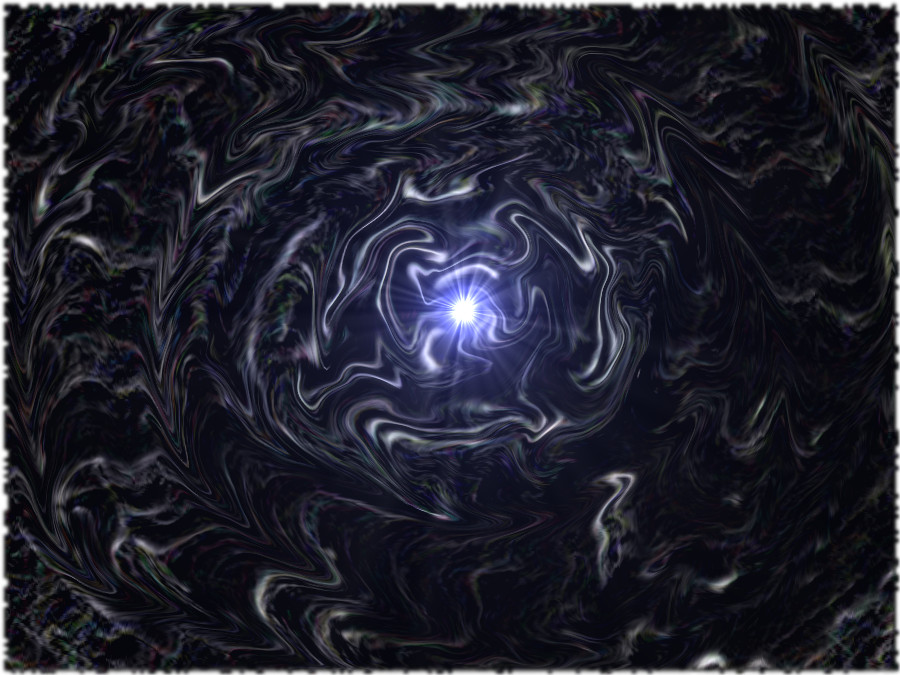
This is the temporal rift as seen by Mercuzio in the Astral realm as he looked up from the castle on June 4th, 1096 A.D.
Temporal Matrix
| Die Roll | Century |
| 1 | [9 C.E.] -- Battle of the Teutoburg Forest {September} |
| 2 | [451 C.E.] -- In May of this year, the town is ravaged by the fores of Attila. {May} |
| 3 | [801 C.E.] -- The fortress at Wifilisburg rebuilt and garrisoned by Charlemagne against the Hungarians. {June} |
| 4 | [1094 C.E.] -- The First Flash seen upon Fortress Hill. The Gestapo team arrives from 1933 C.E. {March} |
| 5 | [1095 C.E.] -- The Second Flash seen upon Fortress Hill. The X+V arrive in the Nazi Bell from 1945 C.E. {March} |
| 6 | [1350 C.E.] -- The Black Death arrives in Wifilisburg. {August} |
| 7 | [1631 C.E.] -- Thirty Years' War and the Witch Trials of the Inquisition. {October} |
| 8 | [1815 C.E.] -- In January, a lightening strike causes a fire which guts the Castle. {January} |
| 9 | [1933 C.E.] -- The S.S. Castle is invaded by a rogue Gestapo unit who trigger the original time machine. {March} |
| 10 | [1945 C.E.] -- Saturday, March 31st, the S.S. unit of fifteen men and women enter the Nazi Bell and return to 1095 C.E. {March} |
Supernatural Encounters
| Die Roll | Awakened Entity |
| 1 | [9 C.E.] -- Odila des Marsi {Mage} / Theotman {Werewolf Thurge} |
| 2 | [451 C.E.] -- [Adorján] {Nephandus Mage} + His demon horde VS [Xylander] {Fae Lord & Green-man} |
| 3 | [801 C.E.] -- [Burkhard] {A Carolinian Knight} & His soldiers. |
| 4 | [1094 C.E.] -- St.Calenda's Wandering Pageant, Odeum & Lunar Fair |
| 5 | [1095 C.E.] -- Kreis der Erschlagenen {Wraiths of the Circle of the Slain} |
| 6 | [1350 C.E.] -- Anoster {Decani Demon-lord of the Bubonic Plague} + Followers. |
| 7 | [1631 C.E.] -- [Minna] + [Esther] {Infernalist Witches & worshipers of the Succubi} VS The Inquisition |
| 8 | [1815 C.E.] -- Günter Dorn VS Friedrich Straub {Mage/Doctor} + [Gottschalk] {Technocratic Animation} |
| 9 | [1933 C.E.] -- [The Group] VS [Schutzstaffel] {Sorcerers & Mages} |
| 10 | [1945 C.E.] -- X+V VS Yves Mercure {Mage of the Sons of Ether}[2] |
The Five Talismans
The Four Horse Disk
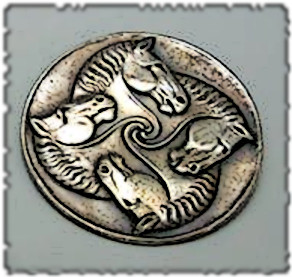
The Four Horse Disk represents the Earth and possesses power over that classical element. The Disk is often found in the possession of the merchant class and holds influence over the Faculty of possessions and the physical body.
The Brass Chalice
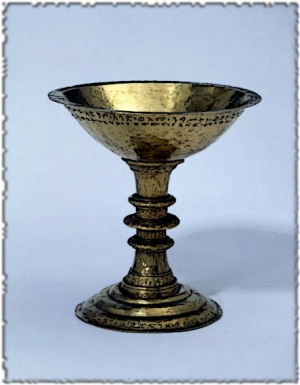
The Brass Chalice represents the classical element of Water and is often found in the possession of someone religious or in the church. The Chalice holds influence over the Faculty of the emotions of both men and beasts.
The Staff of the Winged Serpents
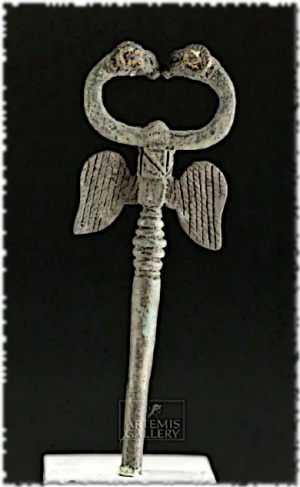
The Staff of the Winged Serpent stands for the classical element of Fire and is often found in the hands of artisans or in places devoted to creativity. The Staff holds influence over the Faculty of creativity and the will.
The Eagle Hilted Dagger
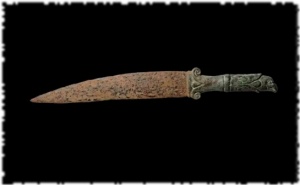
The Eagle Hilted Dagger stands for the classical element of Air and is often found in the possession of either a soldier or a member of the nobility. The Dagger holds influence over the Faculty of Reason.
The North Tower
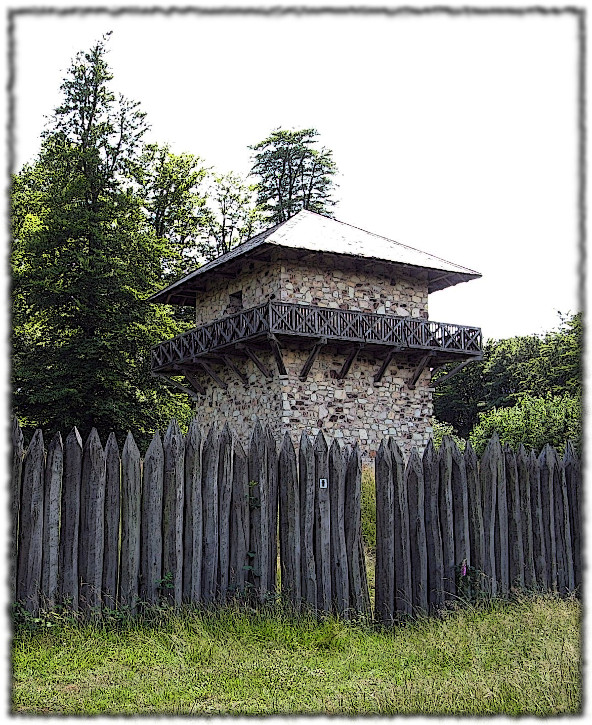 -- The Roman Watchtower
-- The Roman Watchtower
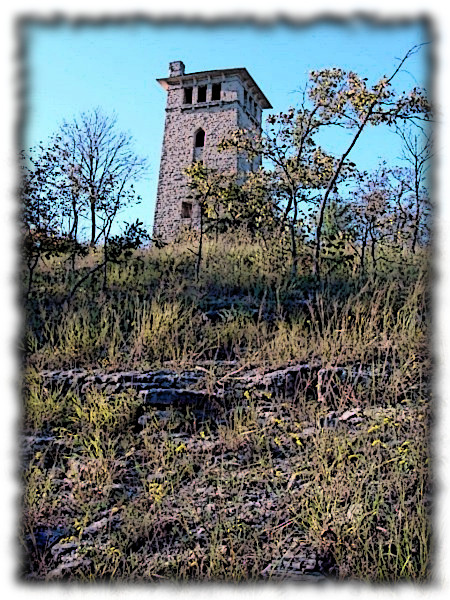 -- Late Roman Tower
-- Late Roman Tower
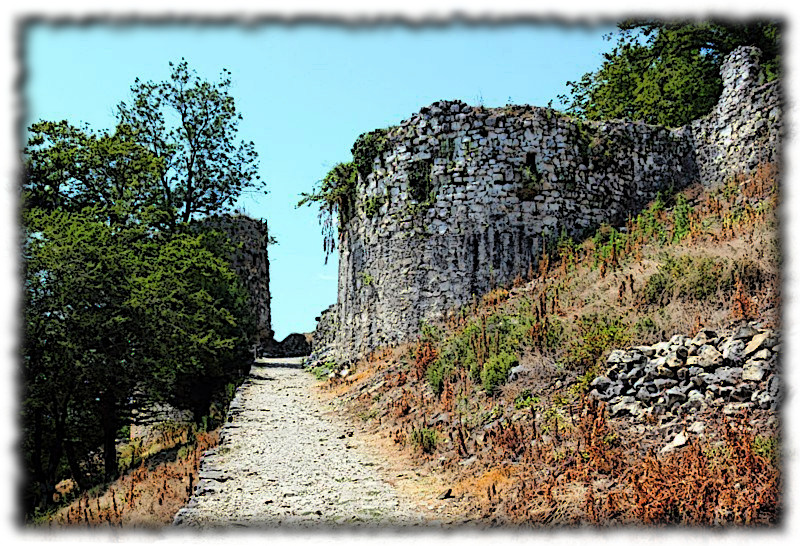 -- Tower Ruins
-- Tower Ruins
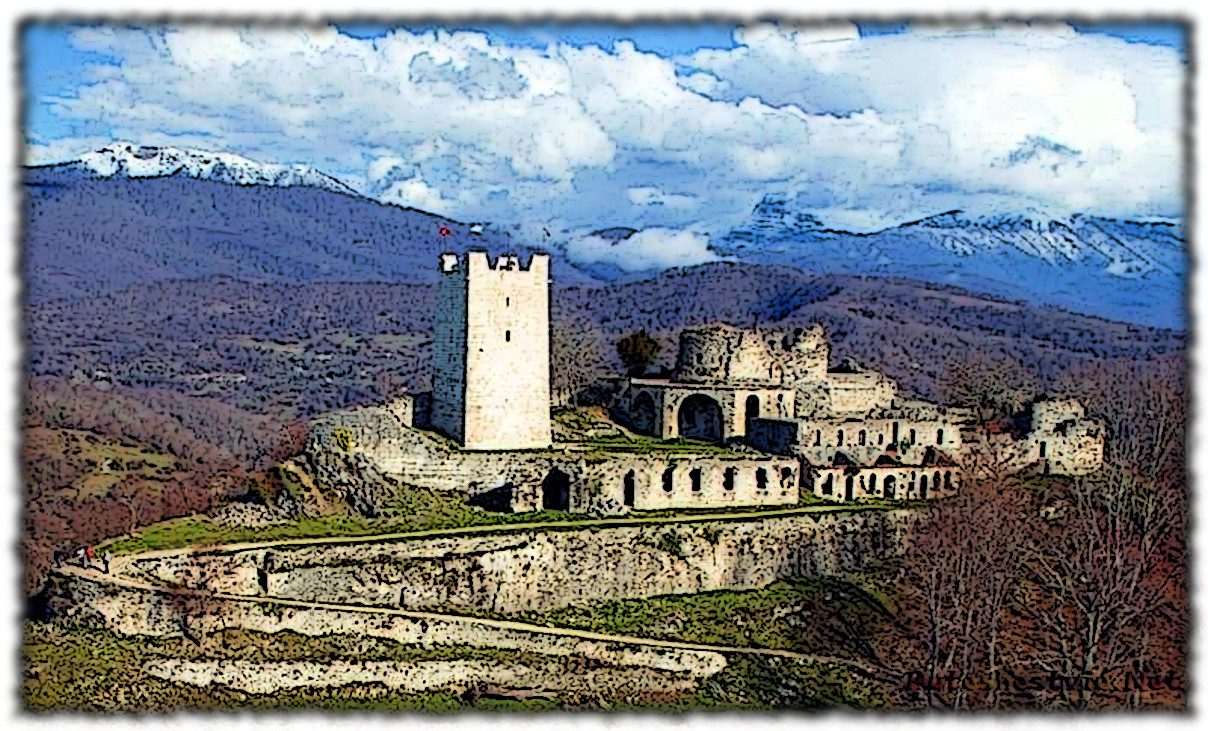 -- Medieval Fortress
-- Medieval Fortress
 -- North Tower of the Renaissance Castle
-- North Tower of the Renaissance Castle
The North Tower represents the classical Fifth Element pf Aether or Quintessence. It holds influence over the Faculty of Change which often represents sudden, disruptive, revelation, and potentially destructive change.
Storytelling Wifilisburg
Theme:
Mood:
Stories of Wifilisburg
Websites
https://www.deviantart.com/tag/wewelsburg
https://occultthirdreich.wordpress.com/2011/08/13/himmler-the-ahnenerbe-and-the-wewelsburg/
http://ondargain3.tripod.com/id64.html
https://www.deviantart.com/tag/wewelsburg?offset=72
https://www.deviantart.com/tag/wewelsburg?offset=24
https://en.wikipedia.org/wiki/Wewelsburg
Battle of the Teutoburg Forest
https://en.wikipedia.org/wiki/Battle_of_the_Teutoburg_Forest
https://www.alisonensis.de/EN/A%20Teutoburg%20Forest%20Battle/A%20Teutoburg%20Forest%20Battle.html {*****}
